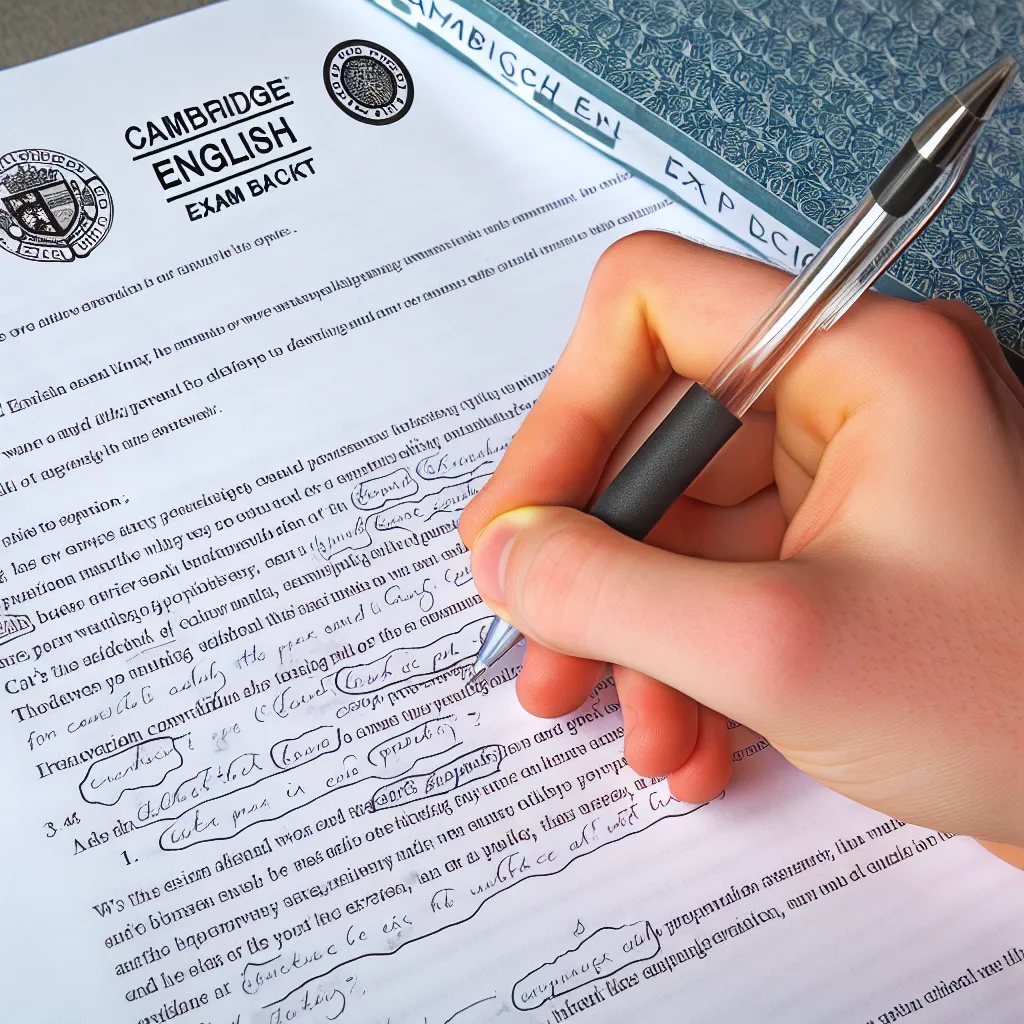Are you preparing for the Cambridge English exams and wondering about the optimal structure for your Writing Task 2 essay? You’re not alone. One of the most common questions among test-takers is, “How Many Paragraphs Should Cambridge Writing Task 2 Have?” In this comprehensive guide, we’ll break down the ideal essay structure, provide expert tips, and help you craft a well-organized response that will impress the examiners.
Understanding Cambridge Writing Task 2
Before we dive into the paragraph structure, let’s briefly review what Cambridge Writing Task 2 entails. This task is a crucial component of Cambridge English exams such as B2 First (FCE), C1 Advanced (CAE), and C2 Proficiency (CPE). It requires candidates to write an essay in response to a given prompt, typically expressing opinions, presenting arguments, or discussing a specific topic.
 Cambridge Writing Task 2 Essay
Cambridge Writing Task 2 Essay
The Ideal Paragraph Structure
Now, let’s address the main question: How many paragraphs should your Cambridge Writing Task 2 essay have? While there’s no strict rule, the recommended structure typically includes:
- Introduction
- 2-3 Body Paragraphs
- Conclusion
This 4-5 paragraph structure is widely accepted and provides a clear, logical flow to your essay. Let’s break down each component:
1. Introduction
Your introduction should:
- Paraphrase the question or topic
- Present your thesis statement
- Briefly outline your main points
Keep this paragraph concise, aiming for about 2-3 sentences.
2. Body Paragraphs (2-3)
Each body paragraph should focus on a single main idea that supports your thesis. Typically, you’ll want to include:
- A topic sentence
- Supporting details or examples
- An explanation of how this relates to your overall argument
Most essays will have either two or three body paragraphs, depending on the complexity of the topic and your approach.
3. Conclusion
Your conclusion should:
- Summarize your main points
- Restate your thesis in different words
- Provide a final thought or call to action
Like the introduction, keep your conclusion brief and to the point.
Why This Structure Works
This 4-5 paragraph structure is ideal for several reasons:
- Clarity: It provides a clear beginning, middle, and end to your essay.
- Organization: It helps you organize your thoughts logically.
- Balance: It allows you to develop your ideas fully without being overly verbose.
- Examiner-friendly: It makes it easier for examiners to follow your argument.
Tips for Crafting Your Paragraphs
To make the most of this structure, consider the following tips:
- Plan before writing: Spend a few minutes outlining your essay before you start writing.
- Use transition words: Connect your paragraphs smoothly with phrases like “Furthermore,” “In addition,” or “On the other hand.”
- Vary sentence structure: Mix short and long sentences to maintain reader interest.
- Stay focused: Each paragraph should have a clear main idea that supports your overall argument.
 Essay Planning for Cambridge Writing Task 2
Essay Planning for Cambridge Writing Task 2
Common Mistakes to Avoid
When structuring your Cambridge Writing Task 2 essay, be wary of these common pitfalls:
- Too many paragraphs: Having more than 5 paragraphs can make your essay feel disjointed.
- Too few paragraphs: A single-paragraph essay lacks structure and depth.
- Imbalanced paragraphs: Ensure your body paragraphs are roughly equal in length and importance.
- Repetitive content: Each paragraph should introduce new information or perspectives.
Adapting to Different Question Types
While the 4-5 paragraph structure works well for most Cambridge Writing Task 2 prompts, you may need to adjust slightly based on the specific question type. For example:
- Opinion essays: Might have two body paragraphs presenting opposing views.
- Problem-solution essays: Could have one paragraph describing the problem and another proposing solutions.
- Advantages-disadvantages essays: Might dedicate one paragraph to advantages and another to disadvantages.
Practice Makes Perfect
Remember, mastering the art of essay writing takes practice. Try writing several essays using this structure, timing yourself to meet the exam conditions. Ask a teacher or language exchange partner to review your work and provide feedback.
Conclusion
In conclusion, while there’s no one-size-fits-all answer to “How many paragraphs should Cambridge Writing Task 2 have?”, a 4-5 paragraph structure (introduction, 2-3 body paragraphs, and conclusion) is generally the most effective approach. This structure allows you to present your ideas clearly and logically, which is crucial for scoring well in the Cambridge English exams.
Remember, the key to success in Cambridge Writing Task 2 isn’t just about the number of paragraphs, but how well you develop and connect your ideas within those paragraphs. Focus on clarity, coherence, and strong argumentation, and you’ll be well on your way to achieving an excellent score.
[internal_links]
Keep practicing, stay confident, and good luck with your Cambridge English exam preparation!




